Some years ago I looked for a vertical milling machine for my workplace, an Agricultural Service Company. Having previously bought a second hand lathe, a Harrison L15, from a nearby machinery dealer and having a Myford Super 7 which matches up with my own machine to the extent of using some of my GHT extras on the works unit, I felt that a miller was the next essential.

The first answer was negative, but on further reflection my dealer said that he had a unit in the yard which had been damaged on trying to load it out to another customer. He had caught the leadscrew with the mudguard of his 10 ton forklift and bent it (the leadscrew that is). The machine was an Alfred Herbert 47V, all 6.7 tons of her. The deal was agreed on the basis that as our premises were closer to the local scrap yard than his; he would charge us scrap price and if I could effect a repair we would have a miller and if I could not, then the local scrap yard was just round the corner. In fact, I had to borrow their large fork lift to unload the machine and position it in our premises.
Cutting a longish tale short, the leadscrew was removed, taken to our 60 ton hydraulic press and, with a couple of Vee-blocks, gently straightened. Luckily the leadscrew is held stationary, whilst the drive nut revolves around it. The whole machine was then cleaned up, oiled, adjusted and is back in useful service (photo 1).
Now to the second part of the story. I journeyed from North Yorkshire to South Devon to collect my wife who had been visiting her sister. We had a couple of days to spare so, on a visit to an antique shop in Dartmouth, I was immediately attracted to an Alfred Herbert wooden cased precision level (photo 2) but the asking price on the label was more than a bit frightening to a Scotsman who has lived over 40 years in Yorkshire. Getting into conversation with the lady of the shop, and giving some (hopefully useful) advice on setting up a wheel barometer, I decided to put in a cheeky offer for the level. After consulting her husband by phone, the offer was accepted. I won’t detail the reactions of my wife and in-laws on hearing what I had paid for the level but they think I’m daft anyway.
Bu hikaye Model Engineer dergisinin 4555 sayısından alınmıştır.
Start your 7-day Magzter GOLD free trial to access thousands of curated premium stories, and 9,000+ magazines and newspapers.
Already a subscriber ? Giriş Yap
Bu hikaye Model Engineer dergisinin 4555 sayısından alınmıştır.
Start your 7-day Magzter GOLD free trial to access thousands of curated premium stories, and 9,000+ magazines and newspapers.
Already a subscriber? Giriş Yap
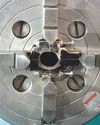
WORKSHOP TIP - Boring Eccentrics
I am making a 1 inch Minnie traction engine and have arrived at the machining of the eccentric straps.
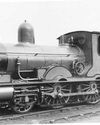
Wenford A 7¼ Inch Gauge 2-4-0 Beattie Well Tank
The stage has now been reached where the well tank body can be completed but beforehand there are some internal details to add.
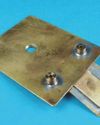
Vertical Boiler Locomotives
Vertical Boiler Locomotives
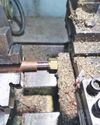
Union Nuts, and How to Make Them
These are quite different from those commercially available and are made from copper
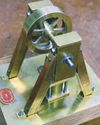
SHOWCASE Paul's Engine
One day my son Paul came to me and asked if we could make something in my workshop, so that he could learn engineering processes.
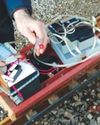
CLUB NEWS
My secret’s out!

Building Dancer - The Boiler
Dancer needed a boiler that would be somewhat larger than the size permitted under the Model Engineering exemptions in the New Zealand regulations.

An Inverted ‘Ross Yoke' Watercooled Stirling Engine
As with all my hot air engines they are cheap to build, mostly from scrap
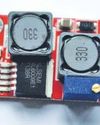
A Draught Proposal
A Draught Proposal
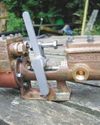
A Boiler Feed Pump
A Boiler Feed Pump